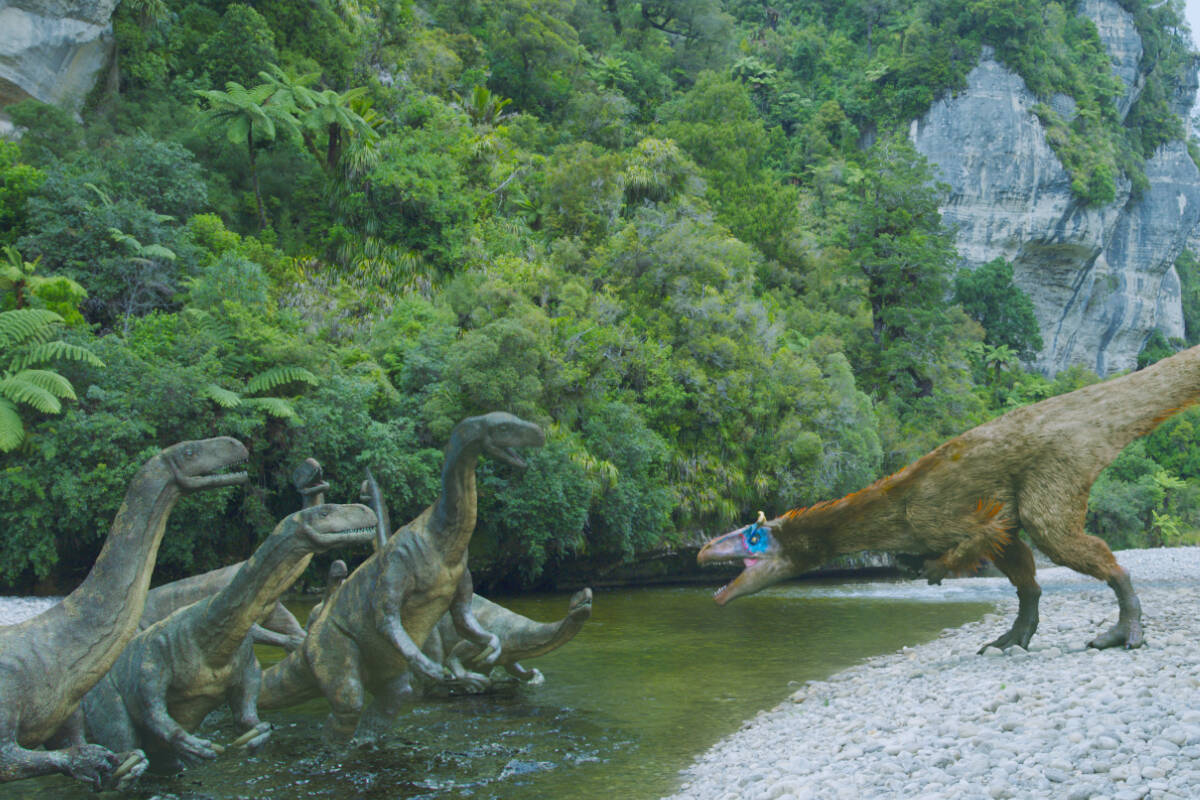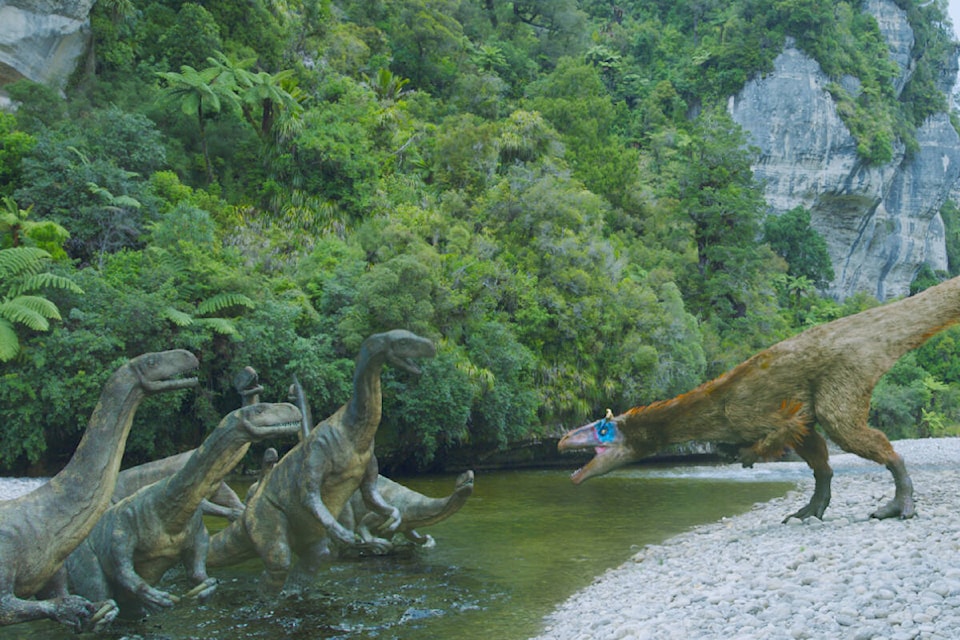At first glance, the IMAX Victoria film Dinosaurs of Antarctica might not seem to have much in common with fossil hunting in northern British Columbia.
But look below the surface – much like the palaeontologists themselves – and we see that the frozen southern continent and B.C.’s remote northern regions share more than a few similarities.
“The environment in some ways is not very different,” says Royal BC Museum’s Curator of Palaeontology, Dr. Victoria Arbour.
Like today’s Antarctica, Northern B.C. receives significant snowfall through the winter, and some areas, like the Sustut River where ‘Buster’, the one and only known Ferrisaurus sustutensis was discovered, are difficult to access and explore. The Royal BC Museum palaeontology team is currently exploring Spatsizi Plateau Wilderness Provincial Park – with no vehicle access, can have fewer than a dozen hikers pass through each year.
Some areas of B.C., like the shale beds of Tumbler Ridge to the east, have been better researched, yet studying the Spatsizi Plateau, with rock the right age to hold fossilized dinosaurs, has many rewards, Dr. Arbour says.
“I’m thrilled I get to do it. What we’re doing is new, so whatever we find is new.”
Like Buster, the Iron Lizard of the Sustut River, and star of the Royal BC Museum’s exhibit Dinosaurs of BC.
Joining Buster in the B.C. exhibit are other dinosaurs that once roamed the province’s highest peaks, densest forests and most remote river basins during the Cretaceous period, 145 million to 66 million years ago.

Antarctica’s landscape holds records far older – from the Jurassic period, some 201 million to 145 million years ago.
Showing at IMAX Victoria, Dinosaurs of Antarctica takes audiences to the south polar landscapes of Antarctica – as they were hundreds of millions of years ago. Instead of ice, primitive forests and thick swamps were home to bizarre dinosaurs and colossal amphibians – a surreal world of bug-eyed giants and egg-laying mammals, where survival meant enduring the sunless, six-month polar winter surrounded by meat-eaters with night vision.
DINOSAURS OF ANTARCTICA - Official Trailer from Giant Screen Films on Vimeo.
Exploring this lost prehistoric world of Gondwan, intrepid scientists endeavour to understand the ice continent’s profound transformation and predict the future as humans drive dramatic change.
“The story of the research team that go look for fossils in the Transantarctic Mountains is pretty intense,” Dr. Arbour says, noting that while research into the region has been ongoing for several decades, the cost of the expeditions means scientists can’t visit often.
Together, the Dinosaurs of BC exhibit and IMAX Victoria film offer a fascinating look at two distinct, but not so unlike, palaeontological explorations.
“I really hope people take away a realization that we have an amazing potential for dinosaur fossils in the province,” Dr. Arbour says. “We’ve already found so much, and there’s so much more still to find. We’re just at the beginning of the story.”
See Dinosaurs of BC through Jan. 7, 2024 at the Royal BC Museum, where you’ll also find SUE: The T. rex Experience. Dinosaurs of Antarctica shows daily at IMAX Victoria through January 2024.
